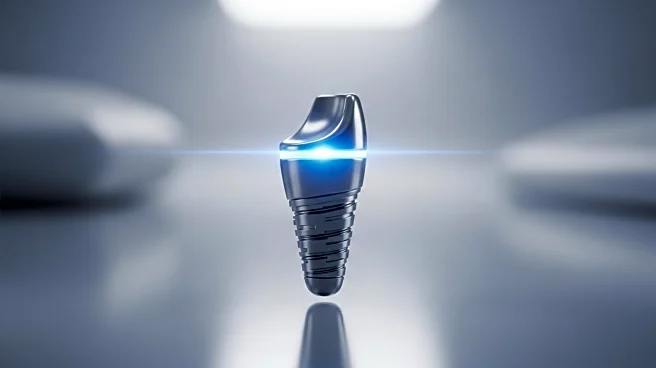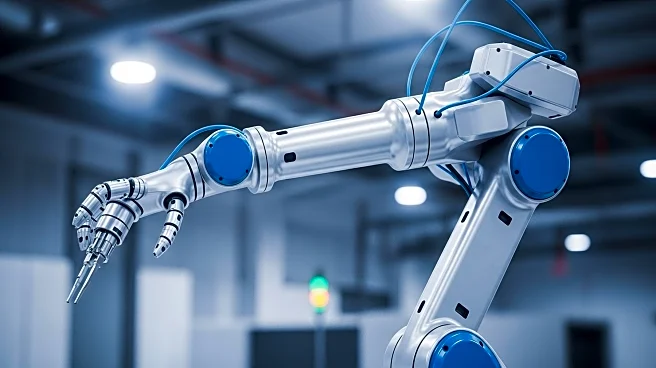What is the story about?
What's Happening?
Zimmer Biomet Holdings, Inc. has announced the approval of its iTaperloc Complete and iG7 Hip System by Japan's Pharmaceutical and Medical Devices Agency (PMDA). This marks the world's first orthopedic implants with Iodine Technology designed to inhibit bacterial adhesion and prevent biofilm formation, addressing the issue of Periprosthetic Joint Infection (PJI) after total joint replacement. PJI is a significant complication in joint arthroplasty, with a mortality rate comparable to certain cancers. The new technology integrates a controlled-release iodine layer to enhance implant safety during the postoperative period, representing a major advancement in orthopedic implant design.
Why It's Important?
The approval of Zimmer Biomet's iodine-treated hip replacement system is a significant development in the field of orthopedic surgery, offering a novel solution to combat PJI, a common and serious complication. This innovation has the potential to improve surgical outcomes and patient safety, reducing the need for revision surgeries and associated healthcare costs. By preventing bacterial adhesion and biofilm formation, the technology addresses a critical challenge in joint replacement procedures, potentially setting a new standard for infection management in orthopedic implants.
What's Next?
Zimmer Biomet plans to leverage this approval to strengthen its portfolio of infection management solutions, providing surgeons with advanced tools to address infection risks. The company aims to continue its robust product cycle, focusing on delivering transformative innovations in musculoskeletal health. The approval in Japan may pave the way for similar regulatory successes in other markets, expanding the availability of this technology globally.
Beyond the Headlines
The introduction of iodine-treated implants highlights the importance of integrating biocompatible materials in medical device design to enhance patient safety. This development underscores the role of innovative technologies in addressing longstanding challenges in healthcare, potentially influencing future research and development in orthopedic surgery.
AI Generated Content
Do you find this article useful?















